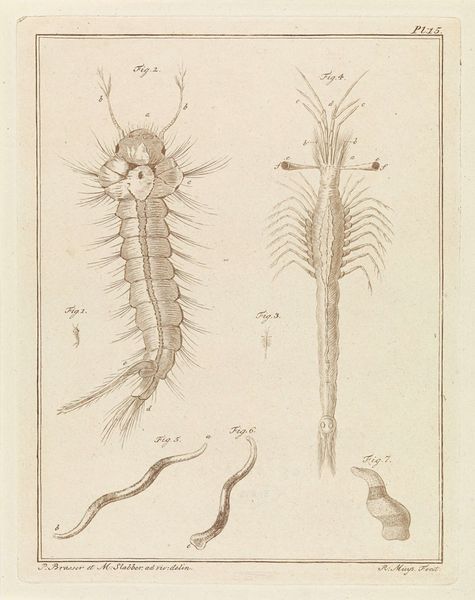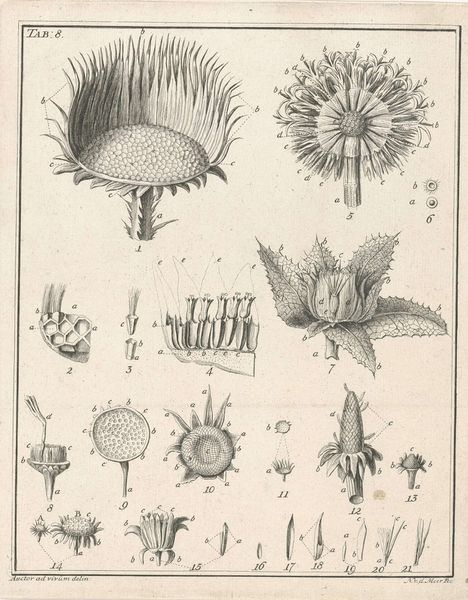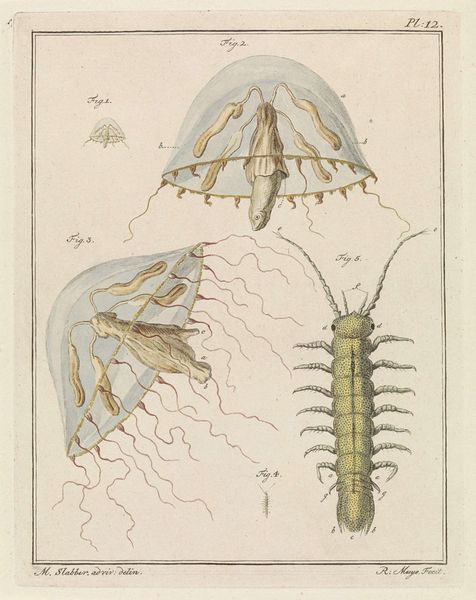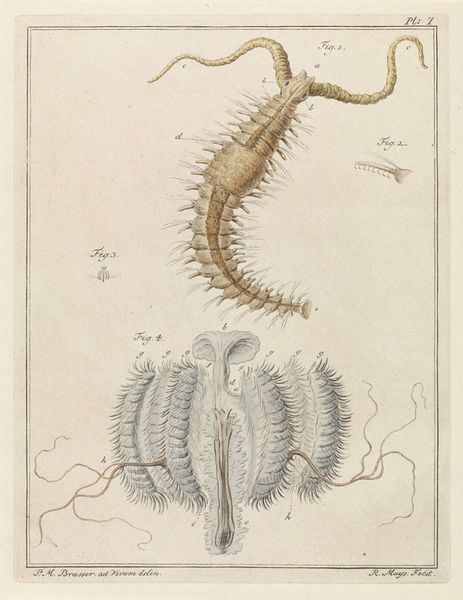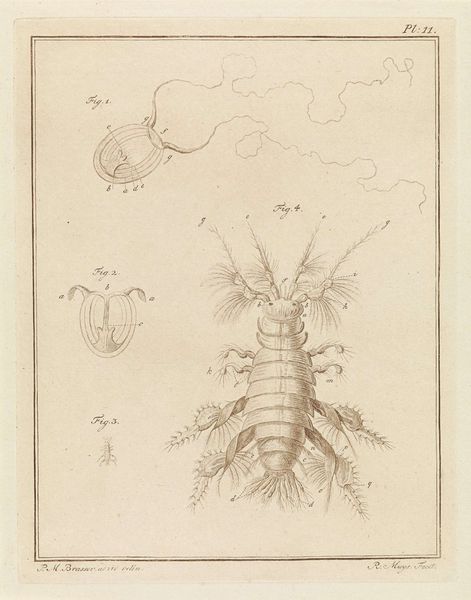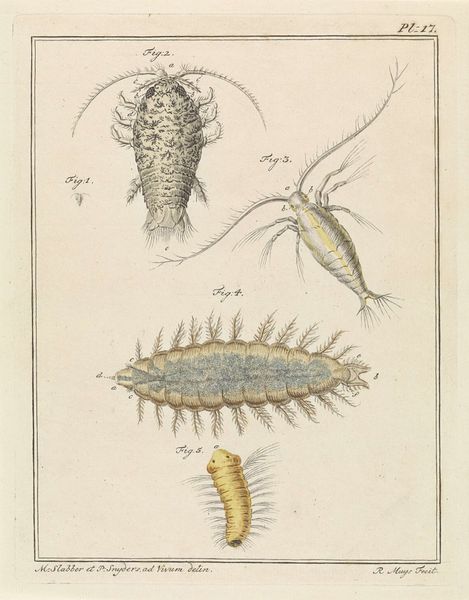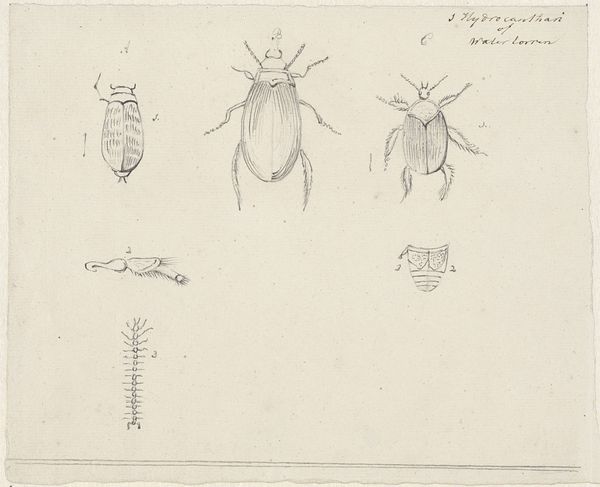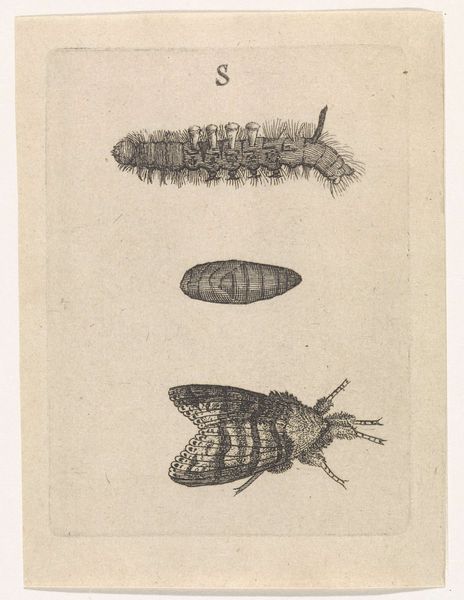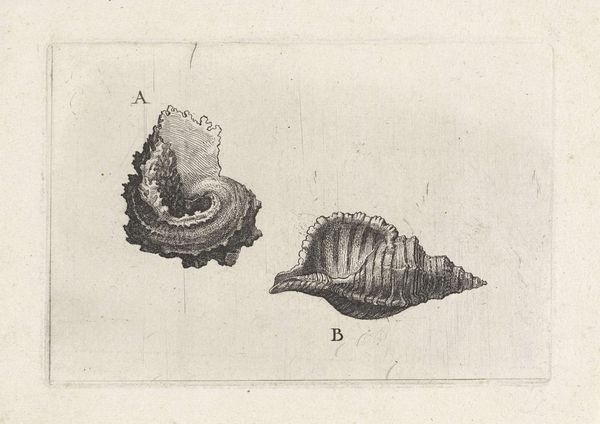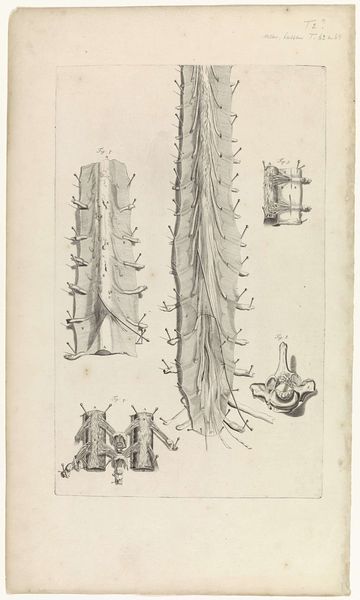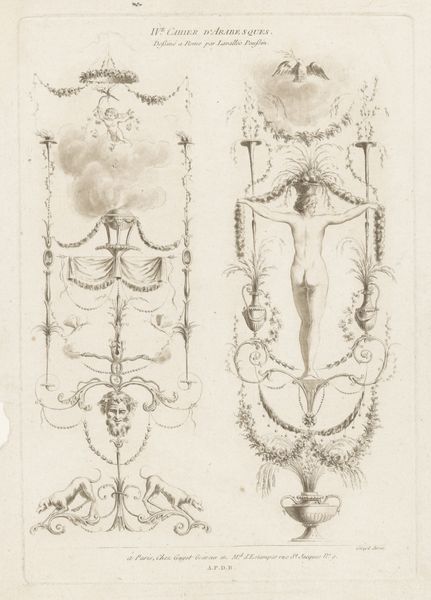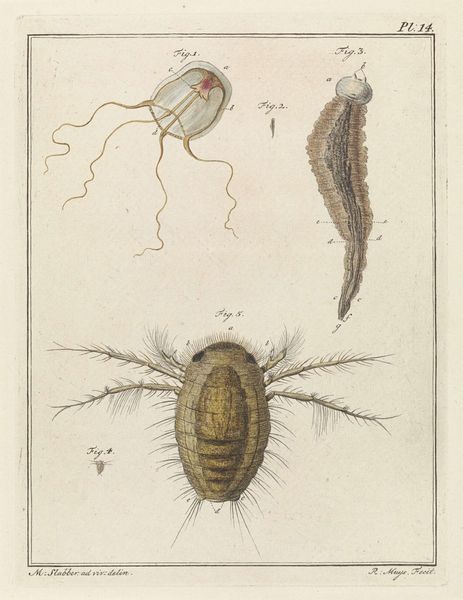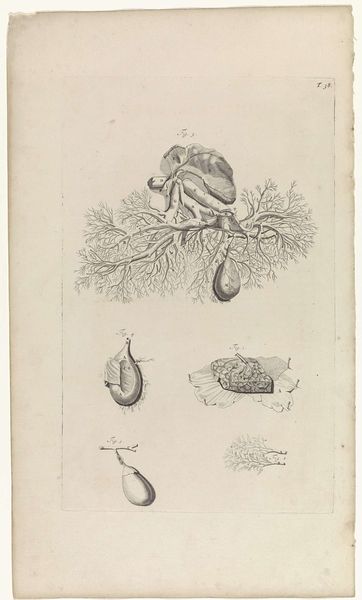
drawing, print, etching, paper, pen
#
portrait
#
drawing
# print
#
etching
#
paper
#
pen
#
academic-art
#
realism
Dimensions: height 212 mm, width 166 mm
Copyright: Rijks Museum: Open Domain
Curator: What an interesting tableau! Before us we have “Pluimmug larve” created around 1778 by Robbert Muys. This detailed image, currently housed in the Rijksmuseum, is a print employing etching, pen, and paper techniques. The depicted larvae, while perhaps unsettling to some, showcases Muys’ clear skill in both art and scientific illustration. Editor: Unsettling is right! It has this sort of clinical detachment... Makes me think of old textbooks and stuff under microscopes. Even though the image itself is beautiful, the stark presentation takes you far from any emotional investment you may have with, say, bugs! Curator: That dispassion likely stems from the conventions of the era, as realism was just starting to gain serious traction, and anatomical or zoological drawing served academic as well as aesthetic functions. Images of insects—even unattractive ones—served to broaden understandings and inform scholarship. What the viewer “felt” wasn't the driving priority. Editor: Hmm. It's cool how the academic precision emphasizes certain angles and textures... Like in Figure 3. The etching almost transforms something unsettling into pure line work... It gives this strange harmony to otherwise pretty horrifying images. Did Muys himself intend this drawing as pure academic illustration or do you feel that he saw his own “style” shine through this image? Curator: Well, by examining similar illustrations, and by knowing a bit of Robbert Muys' personal artistic ambitions, we can assume that these sketches fit quite well into broader trends of late 18th-century scientific illustration. In this sense, his “style” wasn't that important—that role was surrendered to scientific goals, although his technique and personal artistry did sneak through. Editor: Even through all the history and science, seeing these sorts of drawings now is almost like rediscovering a whole weird universe. It makes you think about how much the way we portray the natural world is always linked to how society “sees” it. Curator: Precisely. Thank you for sharing such a visceral insight—these larval forms remind us that even in meticulous scientific endeavor, humanity's footprint leaves a definite imprint.
Comments
No comments
Be the first to comment and join the conversation on the ultimate creative platform.
